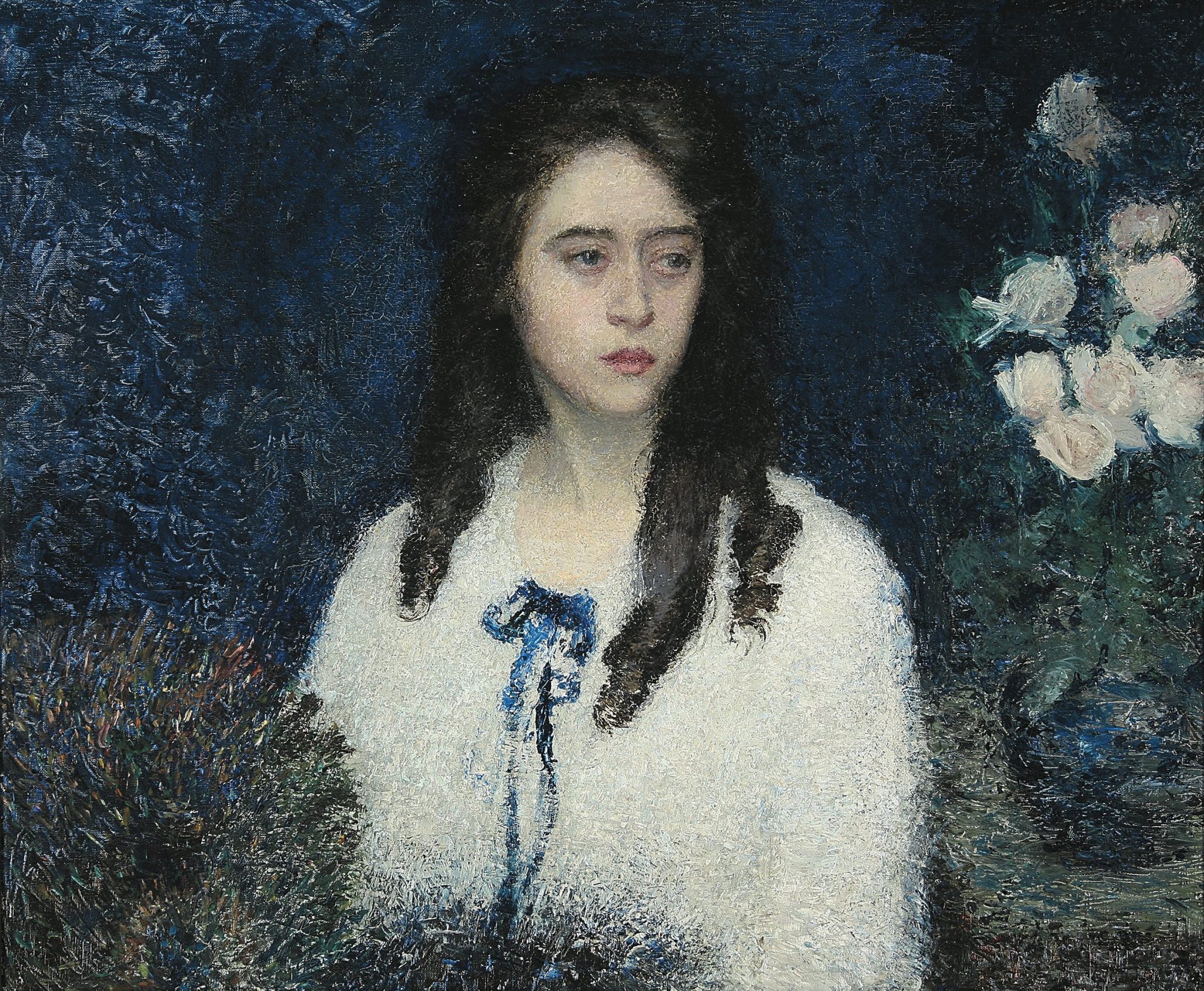Ogden Museum of Southern Art
925 Camp St
New Orleans, LA 70130
504.539.9600 | HOURS
925 Camp St
New Orleans, LA 70130
504.539.9600 | HOURS

Helen Maria Turner, The Dreamer, 1919, Oil on canvas, 25 x 30 inches, Roger Houston Ogden Collection
Helen Maria Turner was born on November 13, 1858 in Louisville, Kentucky, during an extended family stay with her mother’s sister. Her mother, born Helen Maria Davidson, was from a prominent family in New Orleans and her father, Mortimer Turner, was a wealthy coal merchant from Alexandria, Louisiana. Her family resided in Louisville until 1862, until they fled further South to Louisiana in an attempt to avoid the increasing effects of the Civil War. By 1871, Turner was orphaned at age 13, as her mother succumbed to illness and her father passed away a few years later. Turner and her siblings went to live with her widowed uncle, during which time her late father’s commercial enterprise quickly deteriorated.
Helen Maria Turner began painting at age 22, and although she was initially self-taught, she quickly became involved with the newly created Southern Art Union, later reorganized as the New Orleans Artist’s Association. While there, she enrolled in free classes under Andres Molinary and Bror Anders Wikstrom, both accomplished artists within and outside the region. During the nineteenth century, women’s occupations outside domesticity were limited, which led Turner to sell paper flowers, charcoal drawings and painted palmetto fans to earn a living. At age 35, she briefly left New Orleans for an arts instructor position at St. Mary’s Institute, a Protestant Episcopal School in Dallas, Texas. Two years later, she moved to New York City with her sister, Laurette “Lettie” Turner, where she studied under the tutelage of Kenyon Cox, Douglas Volk, William Merritt Chase and Arthur Wesley Dow at the Art Students League, Cooper Union and Columbia University. She taught cast, life and costume drawing to “women studying for self support” at the Art School of the New York Y.W.C.A. for seventeen years. Simultaneously, Turner’s well rendered, impressionist paintings were included in many significant exhibitions, including venues such as the Pennsylvania Academy of the Fine Arts and National Academy of Design. In 1921, Helen Maria Turner was notably the third woman elected to full Academician status by the National Academy, following Cecilia Beaux and Lydia Field Emmet.
Helen Maria Turner’s The Dreamer was painted in 1919 and exhibited at Frank K.M. Rehn Gallery the following year. The composition depicts a central figure in a white dress, a young woman with dark, curled hair and alabaster skin tone, juxtaposed with a deep background of Prussian and ultramarine blues. To the left of the figure rests a peacock feather fan and to the right a vase of white roses. Turner utilizes conventional impressionist brushwork throughout The Dreamer, consisting of fleeting, loose brush strokes meant to capture the effects of light and color. Turner’s striking composition draws the viewer’s eye to another focal point, a loose blue ribbon tied to the neckline of the dress. In addition to her use of color and contrast, Turner’s careful handling of the young woman’s cryptic, melancholic expression displays her skillful ability to create mood. After the 1920 exhibition, Frank Rehn wrote the following praises to Turner, “New York is looking at you with envious eyes and making up its mind to grab the next fine thing of yours it gets a chance at…YOU HAVE ARRIVED.”
Featured in the exhibition Knowing Who We Are: From Academic Painting Through Southern Regionalism, Helen Maria Turner’s The Dreamer is on view at Ogden Museum of Southern Art through March 3, 2024.
Learn more about Knowing Who We Are